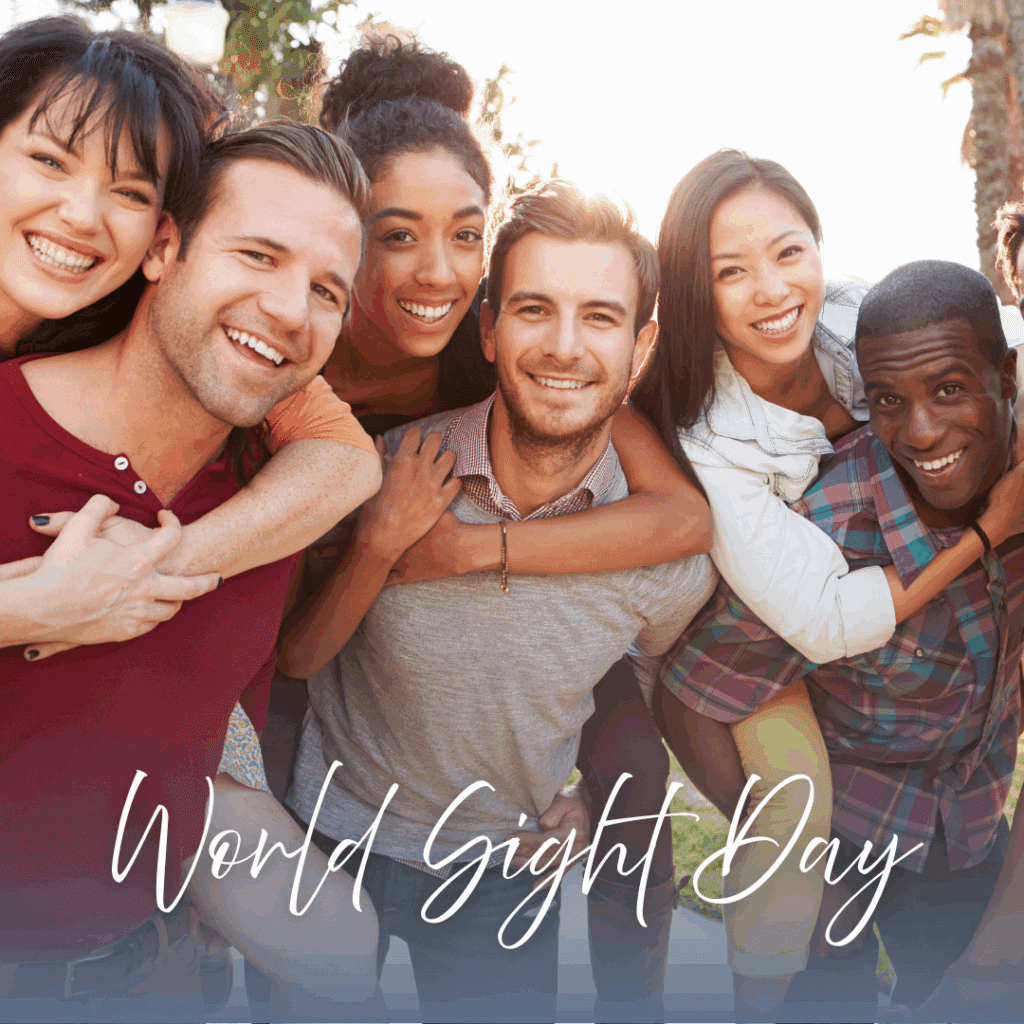
Posted by: Updegraff Laser Vision in Eye Health, Eye Safety, Nutrition
Every year on October 14th, people around the globe come together to observe World Sight Day, a pivotal initiative coordinated by the International Agency for the Prevention of Blindness (IAPB). This annual event is more than just a calendar date—it’s a global call to action reminding us that eye health is not a luxury, but a necessity.
In a world where over a billion people live with preventable or treatable vision impairment, World Sight Day serves as both a wake-up call and a beacon of hope. It’s an opportunity for individuals, healthcare providers, governments, and organizations to unite in the mission of ensuring that quality eye care is accessible to everyone, everywhere.
The Global Eye Health Challenge
The statistics are staggering, and they demand our attention:
- According to the World Health Organization (WHO), 1.1 billion people worldwide live with vision loss, many of whom could regain or protect their sight with proper care.
- The leading causes of vision impairment are often preventable or treatable, including:
- Cataracts – the most common cause of blindness worldwide.
- Uncorrected refractive errors (nearsightedness, farsightedness, astigmatism).
- Glaucoma, diabetic retinopathy, and age-related macular degeneration (AMD) when left untreated.
- Nearly 90 million children worldwide live with some form of vision impairment, which directly affects their ability to learn, develop, and thrive.
- Geographic and economic disparities remain one of the biggest barriers. Millions of people in underserved regions lack access to even the most basic vision screenings or affordable treatments like eyeglasses.
These statistics are not just numbers—they represent individuals whose education, employment, independence, and quality of life are deeply impacted by poor vision.
Why World Sight Day Matters
World Sight Day is not only about raising awareness; it’s about mobilizing action on every level:
- Awareness: It educates communities about the importance of regular eye exams and the fact that most vision loss is preventable.
- Advocacy: It pushes governments, policymakers, and healthcare organizations to invest in eye care systems, making services more affordable and accessible.
- Action: It inspires individuals to prioritize their own eye health and encourage their families, friends, and colleagues to do the same.
As the IAPB Vision Atlas highlights, vision health is directly tied to broader development goals—improving education, enhancing workplace productivity, reducing poverty, and ensuring safer communities.
How You Can Prioritize Your Eye Health
Protecting your sight doesn’t require major life changes. A few consistent, practical steps can go a long way in maintaining lifelong vision health:
- Schedule Regular Eye Exams
- Many eye conditions develop silently, with no noticeable symptoms until significant damage has occurred.
- Routine eye exams help detect early signs of issues like glaucoma, diabetic retinopathy, and cataracts.
- Protect Your Eyes Every Day
- Wear UV-protective sunglasses when outdoors to prevent sun-related eye damage.
- Use safety goggles when working in hazardous environments or playing high-risk sports.
- Reduce exposure to harmful blue light by taking breaks from digital screens.
- Adopt Healthy Habits for Strong Vision
- Eat a diet rich in leafy greens, colorful fruits, nuts, seeds, and fish high in omega-3 fatty acids.
- Stay hydrated—your eyes rely on adequate moisture to stay healthy and comfortable.
- Get enough sleep, as fatigue can strain and weaken your eyes.
- Manage Overall Health Conditions
- Diabetes and hypertension are leading contributors to vision impairment. Properly managing these conditions significantly reduces the risk of vision loss.
- Encourage and Educate Others
- Talk to your children, parents, and peers about the importance of eye care.
- Encourage workplaces, schools, and communities to organize vision screenings.
The Bigger Picture: Eye Health and Society
Eye health doesn’t just affect individuals—it shapes societies. Poor vision can lead to:
- Educational setbacks for children who struggle to learn without proper correction.
- Decreased workforce productivity, costing the global economy billions each year.
- Reduced independence among older adults, increasing risks of accidents and social isolation.
Investing in eye health is one of the most cost-effective public health measures. Simple interventions like providing eyeglasses or cataract surgeries can transform lives, restore independence, and empower entire communities.
Looking Ahead
World Sight Day is not just a one-day event. It’s a reminder to keep eye health at the forefront of our wellness priorities year-round. With the right investments in public health, awareness campaigns, and early intervention, we can work toward a future where preventable blindness is eliminated, and everyone has the opportunity to see clearly.
The theme for 2025 calls on us to recognize that eye health is universal health. Every person—regardless of age, location, or income—deserves access to quality vision care.
Final Message
On October 14th, let’s pause and reflect on the incredible gift of sight. It allows us to connect with the world, experience its beauty, and live independently. Protecting your vision ensures a brighter, healthier, and more fulfilling tomorrow.
Let World Sight Day 2025 be your reminder: Prioritize your eye health—not just today, but every day.
